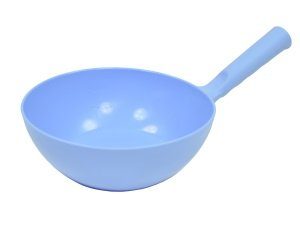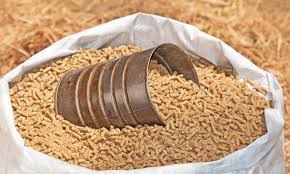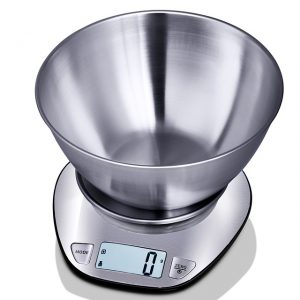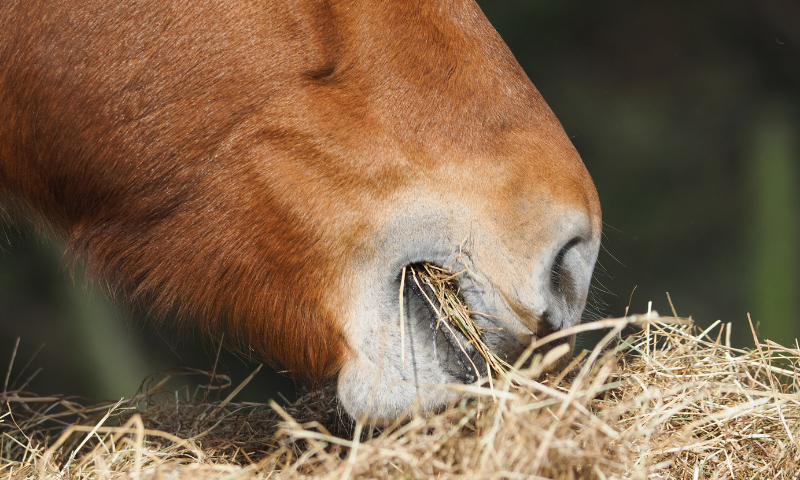Chances are if you have ever discussed feeding your horses with us, you would have had to answer a few questions such as, “What kind of feed do you use and how much of it do you feed?” Usually I get an answer that goes a little like this, “I feed a scoop of this and a dipper of that!” But what I REALLY want to know is, how much does each different feed weigh in whatever scoop, dipper, coffee cup, tin or ice cream bucket that you use.

Horses with continuous access to pasture will usually eat somewhere between 1.5-3.0% of their body weight per day in dry matter (of course there are always those individuals that will consume in excess of this!)
For optimum digestive health horses must receive at least 1.5% of their body weight each day in roughage (grass, hay, chaff and other fibre sources) which would equal 7.5kg for a 500kg horse. If a horse has restricted access to pasture or has very little access to pasture and you are replacing this with alternatives such as hay then you MUST know how much a biscuit/flake of hay weighs in order to establish whether your horse is receiving adequate roughage.

When you add a concentrate to your horse’s diet the company that manufactures the feed will have formulated it in accordance with characteristics of certain classes of horses, including their weight. The company of manufacture will recommend a minimum amount of the feed that each type of horse needs to meet its specific nutrient requirements.
Therefore, by weighing each dipper/scoop that you use for each feed you not only know how much your horse is getting on a daily basis but it also makes it easier to establish whether the horse is receiving a balanced diet and meeting requirements for forage and other nutrients that are important for achieving optimum health, performance and development.
What is the difference between measuring by weight instead of volume?
During my years of going through feed rations with horse owners I have seen vast array of measuring utensils such as coffee cups, company branded scoops and dippers, ice cream containers, tins, jam jars, mixing bowls and even an old helmet and each of these items may hold a different volume. I will often hear, “I feed a 1kg dipper.” However, different feeds have different densities so this is hardly accurate. A dipper of pellets may have the same volume as the same dipper of chaff but the different densities of the feed means they will weigh very different amounts.
How do I weigh my horse’s feed?
Any kitchen/bathroom scale can be used to weigh feed, although I have found that hook scales designed for weighing fish or luggage work better for weighing hay.
When you put your feed bucket or scoop onto the scale make sure you ‘Tare’ the scale or zero out the weight of the bucket/scoop so you get the true weight of the feed itself. Then take the scoop, dipper, coffee cup, helmet or whatever implement you are using and fill it with your chosen feed and place on the scale to get the weight of what one regular serving is.

Make sure you check the feeding guide of the feed that you are using to establish how much your horse should be receiving for it’s weight and workload.

Does your scoop measure up? If not, make appropriate changes to the fill level of your chosen dispensing item to fall within the recommended quantities for your horse.
To weigh hay, hang your hay net/bag on the hook scale and ‘tare’ and then fill with a biscuit/flake to find the average weight of each portion. You shouldn’t have to weigh your feed each time you feed your horse but it is important that you repeat this process for each new feed or different hay type that you introduce into your horse’s diet.
Please contact us to find out how AgSolutions can help with your equine nutrition inquiries.
Written by AgSolutions Technical Advisor
Shannon Godwin BAppSc GDTL
